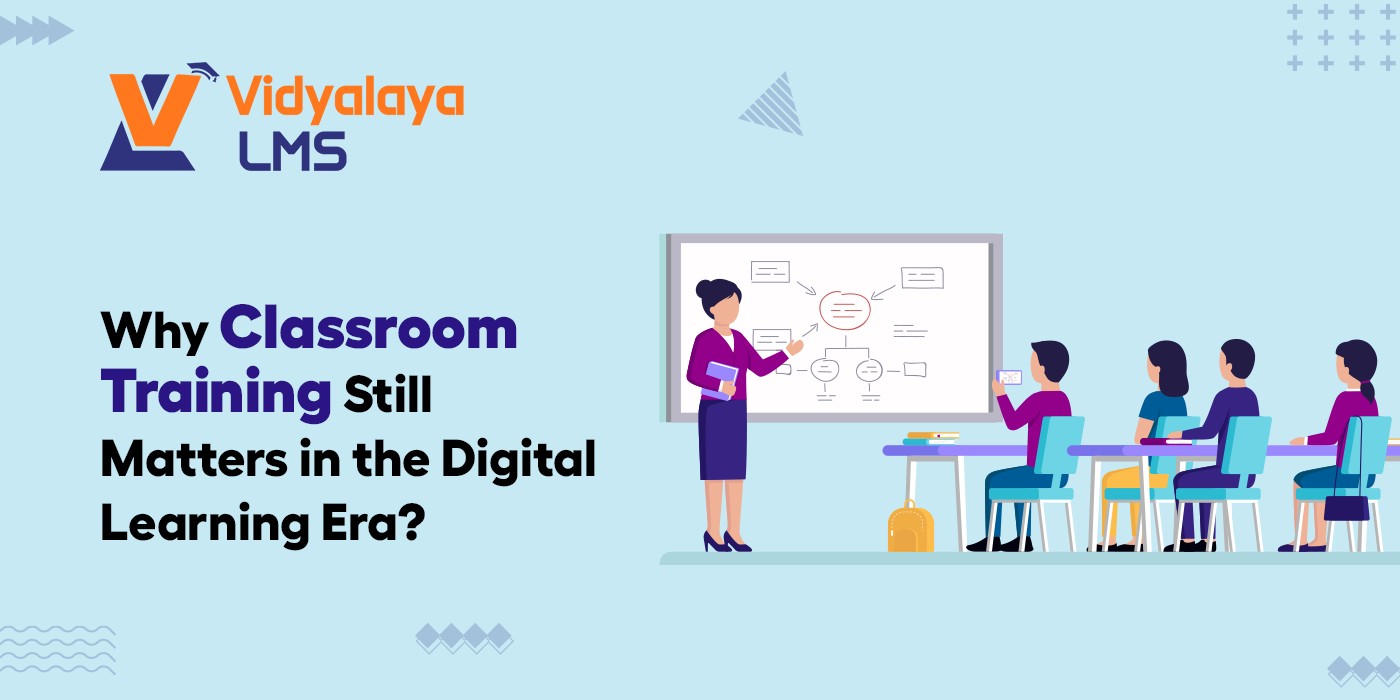You’ve probably noticed it yourself—scrolling through LinkedIn these days almost guarantees you’ll come across posts about online learning, AI-powered tutors, or the latest high-tech training apps. Digital learning is everywhere. From short, on-demand video lessons to fully immersive virtual academies, the landscape of education has transformed dramatically.
But amidst all this digital hype, one thing is often overlooked: traditional classroom training still has a powerful role to play—and in some cases, it can be more effective than even the most advanced online platforms.
Even in today’s hyper-connected world, where learning from the comfort of your couch has never been easier, there’s something uniquely impactful about stepping into a room, interacting with real people, and learning together. This isn’t just nostalgia—it’s human nature.
When the pandemic forced a global shift to remote work, companies rapidly adopted remote training tools and expansive Learning Management Systems. Travel budgets vanished, and organizations needed fast, scalable solutions. Soon after, AI-driven classroom training entered the scene, promising personalized learning paths and actionable insights.
These innovations undoubtedly changed the learning landscape, making education more accessible than ever. Yet after years of screen-based learning, a familiar pattern emerged: attention spans waned; collaboration weakened, and learners often missed the energy and engagement that come from in-person interactions.
That realization sparked a shift. Organizations began blending digital and in-person training, and the results were clear—engagement rose, collaboration improved, and learning became more impactful. The takeaway? When it comes to training, balance often outperforms extremes.
Why Classroom Training Refuses to Fade?
Let’s be honest—digital learning is efficient, but it can feel lonely. Classroom sessions bring energy back into learning. You can ask a question the moment it pops into your head. You can see your instructor’s expression, hear their tone, and read body language. Those subtle cues matter more than most people realize.
Classrooms also build community. When you sit next to someone tackling the same challenge, you talk, share notes, joke about mistakes—and learn together. That interaction can’t be fully programmed into an app.
Even AI classroom training benefits from that environment. Imagine AI tracking participation and giving insights, while a human trainer uses that data to adapt on the fly. Technology supports the teacher; it doesn’t replace them.
Why It Still Matters?
- Real Engagement: It’s hard to multitask in a classroom. Phones go silent, and attention actually stays on the lesson. That physical focus boosts understanding more than we give it credit for.
- Instant Feedback: A confused face tells a trainer everything. They can switch examples or slow them down right away. No online quiz or feedback form can match that immediacy.
- Hands-On Practice: Some things just need to be done in person—teamwork drills, presentations, lab sessions, role plays. Watching a demo isn’t the same as doing it yourself.
- Confidence Building: Speaking up in a group, sharing opinions, getting constructive feedback—all those social parts of learning are tough to replicate online.
- Balanced Learning: The smartest programs now blend both methods. Learners cover theory online through Learning Management System Training modules, then head into classroom sessions to apply what they’ve learned. It’s efficient and personal at the same time.
Tech Isn’t the Enemy—It’s the Classroom’s Greatest Ally
Technology isn’t here to replace the classroom—it’s here to make it stronger, smarter, and more impactful. Modern trainers are no longer limited by time, space, or logistics. Remote Training Software allows them to record sessions, manage attendance effortlessly, and share learning materials instantly. Learners can revisit these recordings at their own pace or join sessions virtually, ensuring no one misses—even while traveling or working remotely.
AI-powered classroom tools take it a step further by analyzing engagement, identifying which topics spark the most discussion, and offering actionable insights to enhance future sessions. This data-driven approach helps trainers tailor content to learners’ needs, making every session more effective and engaging.
The real shift isn’t “classroom versus digital.” It’s “classroom plus digital.” The key lies in understanding which elements thrive in-person and which excel online—blending the two to create a learning experience that’s interactive, flexible, and truly memorable. With the right technology, classrooms become hubs of collaboration, insight, and lasting impact—proving that innovation doesn’t replace human connection; it amplifies it.
The Human Side of Learning
Think back to your own learning experiences. Chances are, you remember a teacher or trainer who truly made a difference—not because of slides or handouts, but because of a story they told, a question they asked, or even a well-timed joke. That’s the magic of being present at the moment. In a classroom, you feel seen. You feel that your participation matters.
Online courses offer convenience and flexibility, no doubt. But they often miss that deeper, emotional connection that makes learning stick. Logging in and completing modules is one thing; feeling engaged, inspired, and part of a conversation is another. Classroom training fosters human connection—sparked by interaction, discussion, and shared experiences—which drives better understanding, collaboration, and long-term retention.
In today’s world, blending digital tools with the human touch ensures learners don’t just complete courses—they truly absorb, apply, and remember what they learn.
Looking Ahead
The future of learning won’t be fully online or fully face-to-face—it’ll be blended. Learning Management System Training will handle the structure, progress tracking, and resources, while classrooms will handle the human stuff: discussion, debate, and teamwork.
Even AI has a role, guiding trainers with data rather than replacing them. The best outcomes will come from this mix of human intuition and digital intelligence. Schools, colleges, and businesses that understand the importance of balance will create stronger learners and happier teams.
Wrapping It Up
Learning isn’t just a checkbox on an employee’s to-do list—it’s a driver of performance, innovation, and collaboration. While digital tools provide structure, flexibility, and scalability, the human element remains irreplaceable. Classroom interactions, real-time feedback, and hands-on experiences create moments of connection and insight that no online module can deliver.
The smartest organizations aren’t choosing between digital and in-person learning—they’re blending the two. Learning Management Systems track progress, deliver content efficiently, and provide analytics, while classroom sessions nurture engagement, discussion, and teamwork. AI enhances the experience by guiding trainers with actionable insights, but it never replaces the spark of human intuition.
This balance isn’t just about better learning—it’s about better business outcomes. Teams that learn together, apply knowledge, and collaborate effectively are more confident, innovative, and productive. Investing in a blended learning strategy isn’t an expense; it’s a long-term growth strategy that strengthens both people and performance.
Ready to see how a balanced, human-centered learning approach can transform your organization?
Contact us today to schedule a complimentary demo of Vidyalaya LMS and discover the future of learning.



























